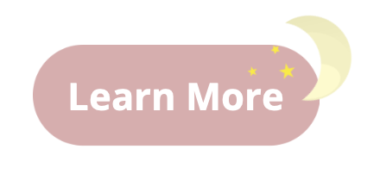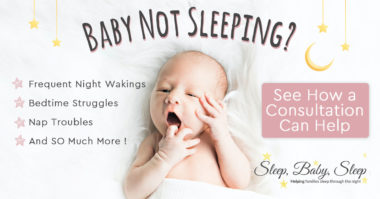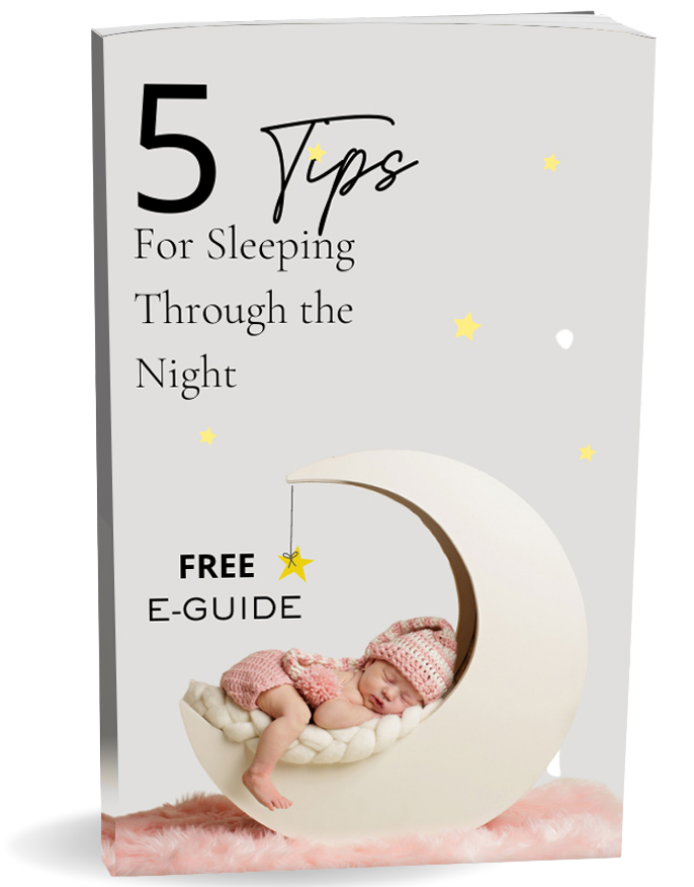The newborn days are a blur for many new moms and dads; feedings, changing diapers and sleeping (or lack of sleeping) are your new life. You might have done anything in the early days to get your little one to sleep; I know I did.
The techniques you started using to get your baby to sleep when you first came home from the hospital are now habits or sleep associations. Your baby needs them to fall asleep. Not all sleep associations are bad but you’ll want to get rid of the ones that involve you helping out.
If you’re at your wits end with helping your little one get to sleep, there’s good news and bad news. The good news is you can definitely get rid of these habits; the bad news is it might take a little work.
Common Baby Sleep Associations
First of all, don’t beat yourself up if you’re feeling bad about using sleep props. Research shows 60% of parents rock their infants to sleep and 75% of infants fall asleep every night feeding. Needless to say, you’re not alone.
Here’s a look at some of the more common sleep props to help baby get to sleep.
![]() Rocking
Rocking
![]() Bouncing
Bouncing
![]() Nursing/Drinking bottle
Nursing/Drinking bottle
![]() Co-sleeping
Co-sleeping
![]() Pacifier that you have to pop back in
Pacifier that you have to pop back in
These sleep associations are helpful in the first few months of your baby’s life, but your baby can get used to them overtime and have trouble falling asleep and staying asleep without them.
By 3 months, you can start getting rid of them. At this age, your little one’s sleep stages are much more developed and their sleep is starting to become more regular. Which means they are capable of getting themselves back to sleep.
Did you know that teaching a baby to sleep independently is one of my specialties? Learn more about my customized sleep plans. I’ll even “hold your hand” through the whole process.
Introducing New Independent Sleep Associations
The best way to break the old sleep associations is to introduce new independent sleep associations. These are props that help your little one get to sleep without you having to help. Here are some good independent sleep associations you can introduce.
![]() White noise
White noise
![]() Lovey (blanket, stuffed animal)
Lovey (blanket, stuffed animal)
![]() Pacifier (if they’re old enough to put it back in)
Pacifier (if they’re old enough to put it back in)
![]() Bedtime routine
Bedtime routine
White noise: White noise plays a couple of roles in helping your little one sleep. The most important benefit is that it triggers your baby’s calming reflex, but it also helps muffle other noises around the house that might wake your baby as he gets older.
Just make sure not to turn the white noise too loud because it can harm your baby’s hearing. My go-to white noise is a box fan. It provides a nice, even sound and is great at blocking outside noise.
Lovey: If your little one doesn’t already have a lovey, now is a great time to introduce one. This could be a small blanket or a small stuffed animal that your baby associates with sleep and comfort.
I usually start introducing the lovey during feeding sessions so my little one gets used to it. It’s important to make sure the lovey is removed when you lay your baby down to sleep for safety reasons.
Pacifier: A pacifier is only a helpful independent sleep aid if your baby can put it back in himself. If you have to put the pacifier back in every time your little one wakes up, you’re back to square one.
Pacifiers are also tricky because they can get knocked out of the crib. I found a great fix to this problem by tying a short ribbon onto four, yes four, pacifiers and then sewing the ribbon onto each corner of a small burp rag. This makes them much more difficult to knock out of the crib.
Bedtime Routine: A bedtime routine is also a great independent sleep association that tells your little one it’s time to go to sleep. Figure out a bedtime routine that works for you and your baby and repeat it every night. This might include a bath, feeding, reading a book and then putting your little one down.
It’s also important to put your baby down when he’s drowsy but not quite asleep. He might not love this at first, but eventually, he’ll learn he can get to sleep on his own. Once he gets to sleep on his own when you first put him down, he’ll be able to put himself back to sleep on his own when he wakes up in the night as well.
Come Up With a Plan
If you want to be successful in breaking the old sleep associations, it’s important to keep a couple of things in mind.
First, talk to your partner about the best plan for both of you. If you’re not on the same page, you’ll stress each other out which will not help things go smoothly.
It’s also important to remember all babies are different. What works for your first baby might not work for your second. For my kids, a cold turkey approach worked best for my first. I dropped the sleep association and she was good to go. My second, though, needed some reassurance, so I had to change the game plan. Figure out what works best for your baby and don’t be afraid to change your plan if it’s not working.
If you’re still having trouble dropping these baby sleep associations, you’ve come to the right place. Instead of taking a one-size-fits-all approach to your baby’s sleep, I customize a sleep plan specific for baby’s sleep troubles. I then help guide you through the whole process to ensure your baby is sleeping well. You can check out the different sleep packages I offer.























